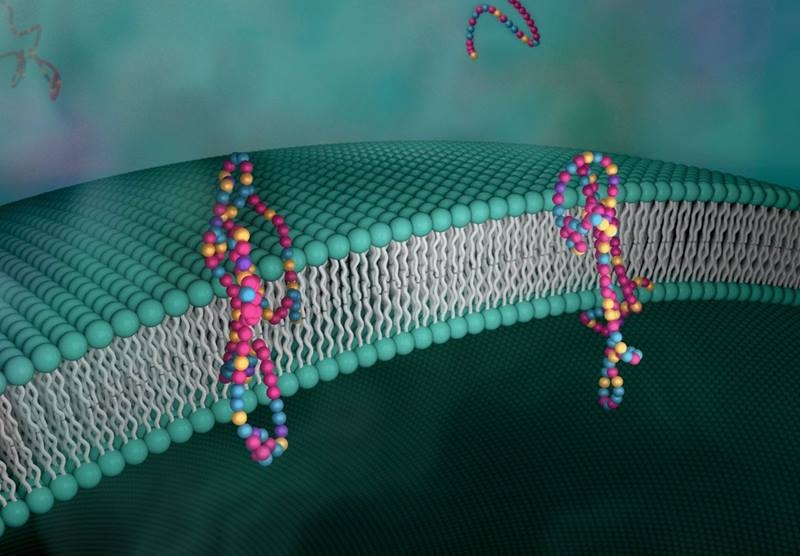The Science
Scientists have long sought to develop synthetic membranes that can match the selectivity and high-speed transport offered by natural membranes. These membranes have a range of potential applications. For example, they might transport protons in and out of cells for use in energy applications. This research designed a unique polymer-based material that is as effective as natural membrane proteins in transporting protons through membranes.
The Impact
Transporting ions is important to many biological functions and technologies. For example, ion transport is part of lithium ion batteries and water purification systems. It is also key to the production of biofuels and pharmaceuticals. This novel design approach paves the way for scalable synthetic materials. These materials would have potential for a range of membrane-based technologies.
Summary
Biological cells consist of a lipid bilayer that forms the membrane structure. This membrane consists of a variety of molecules including transmembrane proteins that can rapidly and selectively transport ions and molecules in and out of the cell. In a quest to mimic the biological membranes, a team of scientists developed a materials design approach for a functional polymer by using a set of monomers that can be grouped in different ways to achieve the desired functionality. The research used computer simulations to predict the locations of the polymer segments in the membrane. The researchers characterized the structure of the polymer system using neutron scattering measurements at the High Flux Isotope Reactor (HFIR), a Department of Energy Office of Science user facility.
These studies showed that the polymers indeed penetrate across the polymer membrane, an insight that will be useful to optimize proton transport. The transport properties of the polymer system shown in fluorescence imaging and calorimetry indicate their proton transfer rates are similar to biomembranes. The design and scalability of these polymer-based materials pave the way for the design of novel materials that mimic biological materials for a range of other applications.
Funding
This research was supported by the Department of Defense Army Research Office and Air Force Office of Sponsored Research, the National Science Foundation, and the DOE Office of Science Basic Energy Sciences program, including computational research, neutron scattering (at HFIR), X-ray characterization (at the Advanced Light Source), and polymer characterization (at the Molecular Foundry), with additional neutron studies at the National Institute of Standards and Technology and nuclear magnetic resonance characterization provided through National Institutes of Health support.
